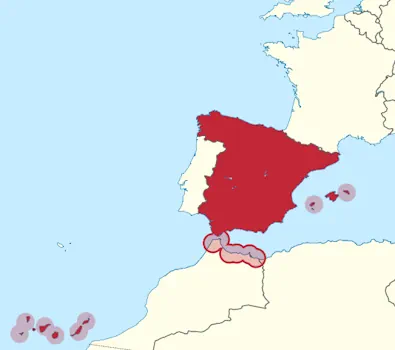Most Visited Cities in Spain
Sun-kissed beaches, historic cities, delectable tapas, and the rhythms of flamenco… Spain is a country that captivates every type of traveler. Embark on a magical journey to Spain and experience an unforgettable travel adventure!
About Spain
Spain, a country located in southwestern Europe, is world-renowned for its rich history, vibrant culture, delectable cuisine, and stunning natural beauty. From the romantic city of Madrid to the captivating Barcelona, the charming Andalusia region to the majestic Pyrenees mountains, Spain offers a diverse range of destinations to explore.
Historical and Cultural Riches:
- Madrid: Spain’s vibrant capital city brimming with iconic landmarks like the Prado Museum, the Royal Palace, and Buen Retiro Park.
- Barcelona: The heart of Catalan culture with Gaudí’s architectural marvels Sagrada Familia and Park Güell.
- Seville: A captivating city with flamenco shows, the Alcazar palace, and Andalusian cuisine.
- Granada: A historic city with the magnificent Alhambra Palace and the Albaicin neighborhood.

Quick Facts:
€ Euro
48,3 million
Type C – Electricity is supplied at 220 to 230V 50Hz
%52 Catholic Christian, %30 No religion
Location:
Where Is Spain?
Spain is situated in southwestern Europe. It boasts a diverse coastline, bordering the Atlantic Ocean to the west and the Mediterranean Sea to the east. To the north, France and Andorra mark the land border, while Portugal lies to the west.
The capital of Spain is Madrid. Barcelona, the heart of Catalan culture with Gaudí’s architectural marvels Sagrada Familia and Park Güell, is Spain’s second-largest city.
Spain is divided into 17 autonomous communities and 2 autonomous cities, making a total of 19 regions. Each region has its own unique language, culture, and history.
Some Natural Wonders:
- Canary Islands: A tropical paradise with volcanic landscapes, black sand beaches, and turquoise waters.
- Balearic Islands: A Mediterranean gem with pristine white beaches, turquoise coves, and pine forests.
- Costa Brava: An unforgettable coastal experience with rugged coastlines, charming towns, and azure blue seas.
- Picos de Europa National Park: Ideal for nature lovers with breathtaking mountain scenery, hiking and climbing trails.
Regions:
The Pyrenees Mountains: Located in northern Spain, the Pyrenees form a natural border with France. This region is known for its high mountains, rugged terrain, and lush valleys.
The Northern Plateau: Situated south of the Pyrenees, the Northern Plateau is the most extensive geographical region in Spain. This region is characterized by its vast plains, agricultural lands, and historic cities.
The Ebro Basin: Lying south of the Northern Plateau, the Ebro Basin is a large area irrigated by the Ebro River. This region is renowned for its agricultural production, wineries, and historic towns.
The Central Plateau: Situated south of the Ebro Basin, the Central Plateau is the highest plateau in Spain. This region is characterized by its dry climate, vast plains, and historic cities.
The Southern Plateaus: Located south of the Central Plateau, the Southern Plateaus feature a lower and more rugged terrain. This region is known for its Mediterranean climate, olive groves, and historic towns.

Coastal Regions: Situated along the northern, eastern, and southern coasts of Spain, the coastal regions border the Mediterranean Sea and the Atlantic Ocean. These regions are characterized by their mild climates, beautiful beaches, and popular tourist destinations.
Each of these six main regions possesses a distinct character with unique geographical features, climatic conditions, flora, and fauna. This diversity makes Spain an exceptional destination to explore.
Spain Travel Guide:
When to Go to Spain:
The most favorable time to visit Spain is during the spring (April-May) and autumn (September-October) seasons. The weather is pleasant during these months, and the tourist crowds are relatively smaller. Summer months (June-August) can be hot and crowded.
How to Get to Spain:
Direct flights to Spain are available from almost anywhere in the world. You can also easily reach Spain from other European cities.
Accommodation in Spain:
Spain offers accommodation options to suit every budget. You can choose from hotels, guesthouses, apartments, and hostels.
Food in Spain:
Spanish cuisine is among the most delectable in the world. Indulge in delicacies like tapas, paella, Iberian ham, gazpacho, Spanish tortilla, churros with chocolate, and sangria.
Festivals in Spain:
Spain hosts various festivals and events throughout the year. Consider incorporating these festivals into your travel plans.
Language in Spain:
Spanish is the official language of Spain. English is also widely spoken in tourist areas.
Visa for Spain:
Citizens of the Schengen Area (26 European countries) and 55 other countries can enter visa-free. Nationals of other countries must obtain a visa in advance.
Be sure to read our “Barcelona Travel Guide” for more detailed information.






